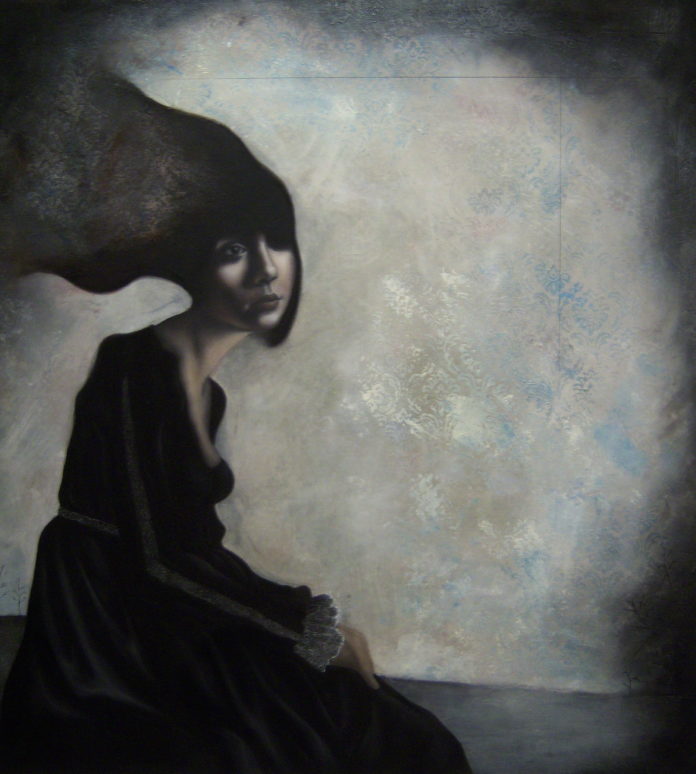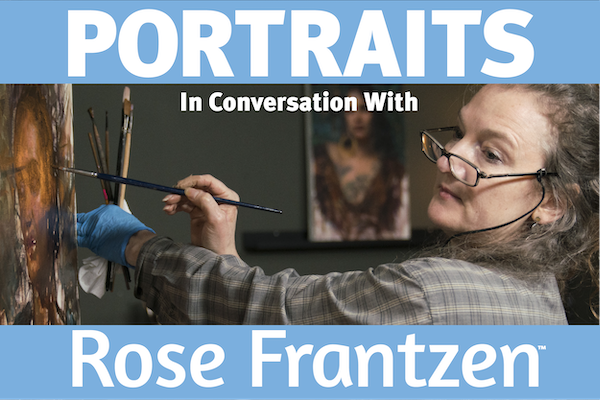On Magical Realism > A butterfly may no longer simply be a butterfly, but a technical means by which to convey a story beyond words…
Putting the Magic Into Realism
BY NICHOLAS HARPER
Imagine a world where your spirit lay untouched, where everything around you was just as it appeared, day in and day out. One might call this existence mundane to say the least. Now imagine there was a way to reawaken that which once was taken for granted. That way is magical realism.
Lying in wait within each individual is a mystical power—one that for most has lain dormant since childhood. This power gives us the ability to see the world in a new and fabulous light, to make the world a wonderful sand-box in which to play. Ordinary objects and situations quickly become laden with the potential for storytelling, allegory, life lessons and inspiration. It’s through these eyes that a magical realist sees the world and depicts it in their artwork.
To the magical realist, for example, a butterfly may no longer simply be a butterfly, but a technical means by which to convey a story or image beyond words, understood subconsciously where symbols rule the day.
Take this passage, for example: “The blood flowed from her wound, seeping effortlessly to the floor, pooling in a great crimson sea from which countless butterflies emerged, each as red as the blood itself. As the winged creatures took to the air, the height of the afternoon sun faded behind a thick veil of crimson until the town was bathed in its silky color. The fluttering cloud sailed across the land enveloping it, proclaiming to the world the death of the young princess.”
A passage like that does more than add a poetic bent to what could be written more easily. It also adds a layer of meaning perhaps only decipherable by the subconscious, and implies a deeper mystery to the circumstances. Rather than simply telling us what happened, it asks us to question the reality and meaning of what happened.
For instance, we might ask what is the meaning behind the butterflies, why do they emerge from the blood and how do the people inherently know the significance of them in the air? Regardless if any answers are readily available, the technique transforms what might be simply taken for granted or thought of as commonplace and forces us to see it in a new light so that we might better appreciate it, and perhaps through introspection, come to a higher understanding of its meaning.
Originally borne within the literary arts and most notably practiced in modern times by writers such as Gabriel Garcia Márquez and Salman Rushdie, magical realism quickly sparked the imagination of visual artists in the twentieth century. Originally based heavily on the “realism” of the subject matter, painters often painted what they saw in a stylized or hyper-real manner to force the viewer into the deeper mystery of the object. Elements of fantasy and the fabulous attached to real objects were typically later additions to the style and are a hallmark of the genre today.
Within my own work, for example, I take advantage of magical realism by distorting the human figure via the elongation of the female neck, the exaggeration of the torso and the fragmentation and dissection of arms and hands. In doing so, the viewer cannot easily dismiss the portrait as just one of many other portraits. Rather, this peculiar rendering of the form invites pause and further exploration of the painting.
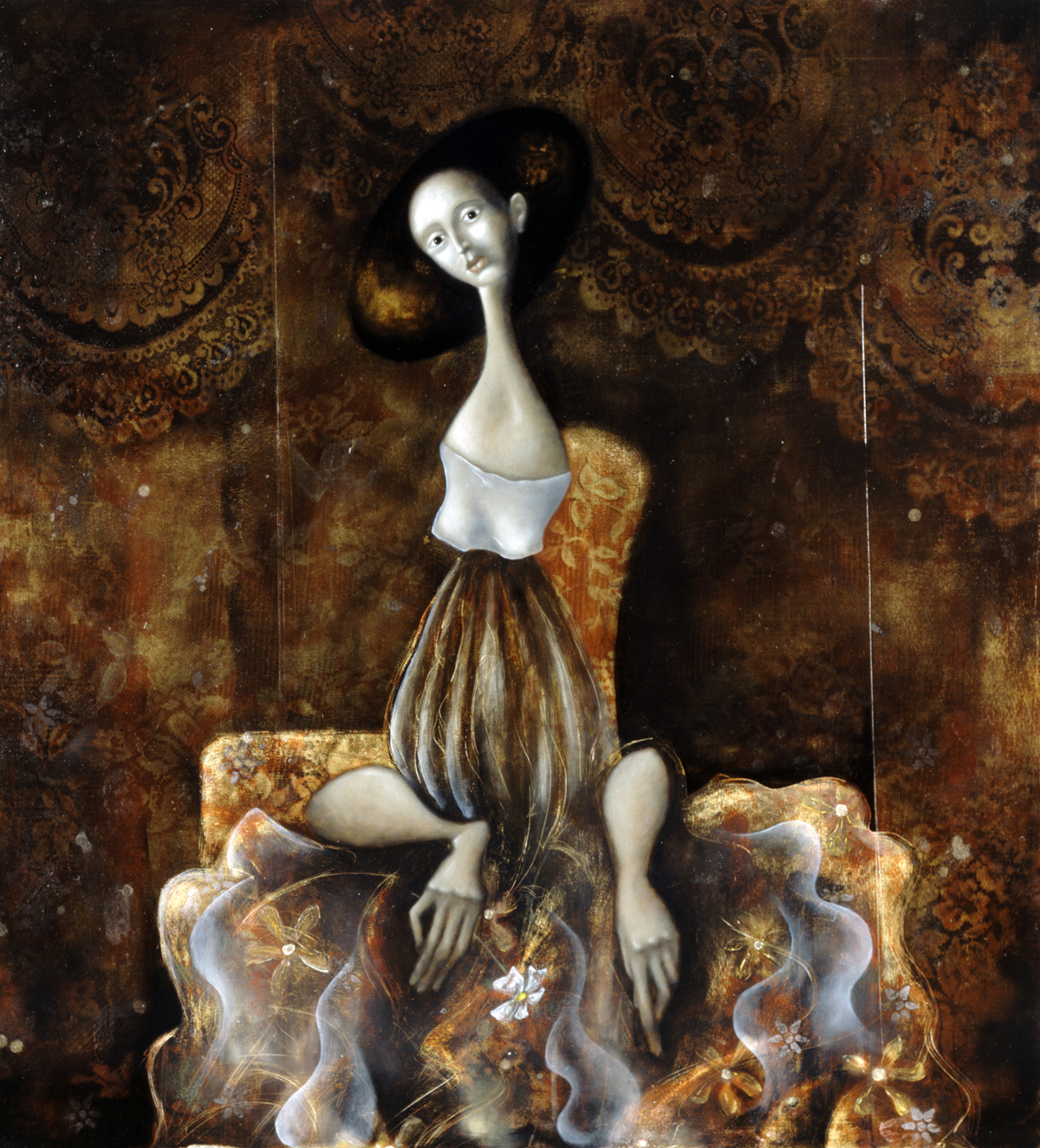
By taking such fantastical liberties with the human form, the sitter of the portrait ceases to be the sole subject of the painting. The re-imagined compositional situation offers a new lens by which to see the painting, and the inherent mystery behind the distortion and fantastical elements becomes the focal point. In this way, rather than focusing on a real person in a real period of time, I hope to elevate the sitter of the painting to the status of symbol, capable of conveying allegorical meaning and the significance of personal introspection by the viewer.
Each element of my work, when interpreted as various symbols, attempts to convey an overarching and archetypal storyline depicting the struggle between the enlightened self and our materially laden worldly nature and the final resolve that unites the two in harmony.
To be specific, the head of the sitter perched upon an elongated neck (perhaps reminiscent of a pedestal on which valuable objects are kept) is representative of the divine, the enlightened and the spiritual potential of the figure.
The hands, by contrast, are drawn low in the composition, are often gnarled or misshapen and often dissected from the rest of the body, as evidenced by a lack of upper arms, and suggest our worldly and often corrupted nature. The elongated neck and torso act as a visual representation of this tension and distance between these two halves of our self.
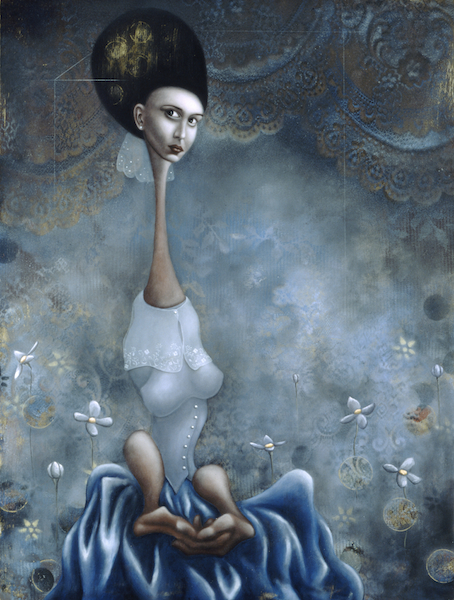
Resolve and unity take shape when seeing the painting from a slight distance. Observed closely, one might chose to focus on each of the parts or fragments of the painting, the hands or the head as disparate units for example. In this way one might see the painting as scattered or disjointed.
However, when stepping back and seeing the painting as a whole, one will see that each part relates to the other adjoining parts much like a single puzzle piece relates with each adjoining puzzle piece. In this light the painting takes on a completeness and wholeness suggesting a symbiotic relationship between all individual elements, and therefore, symbolically, between the various natures found within the human being.
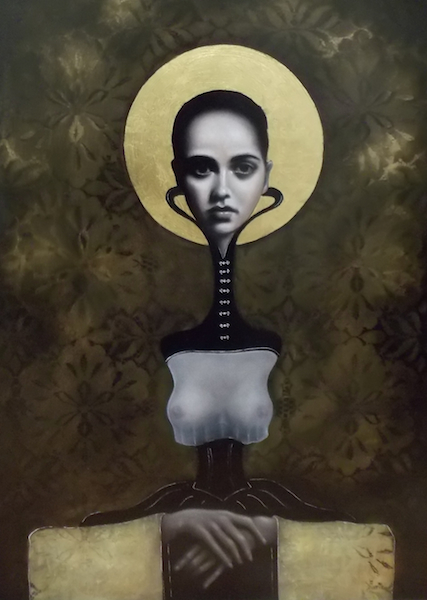
In relation to actual life, one might see the similarity in focusing on any one situation in one’s life, versus stepping outside of one’s self and seeing the totality of one’s existence. When confronted with a difficult situation, such as being unable to pay bills, it’s easy to become immersed in the myopic details of that moment and lose one’s self to fear, stress, anger or frustration. However, if we’re able to step away from that specific situation and see it in context of everything else in our life, perhaps we’ll be better able to handle the immediate emotional demands if not even see a clear answer and future resolve.
That is but one level of possible interpretation within the work. Other elements employed also have a symbolic weight to them, such as various flowers, lace patterns, color schemes, and halos. These all offer the viewer countless possible meanings, some intentionally suggested by me, some understandable by a specific viewer for specific personal reasons, while others will continue to be cloaked in mystery.
“Only mystery allows us to live, only mystery.” – Federico García Lorca
It’s this mystery and potential for endless interpretation that magical realism celebrates and cherishes. It’s a sad fact that it is far too easy to take life and everything in it for granted, to live one day to the next in a fog with no appreciation for how magical our existence and universe truly is. Just as a child at play sees unlimited potential in the most mundane of objects, so too can we unlock our imaginative forces to see the world for the sandbox of wonder it is.
Here’s to the magic of our reality.
Connect with Nicholas Harper at roguebuddha.com.
Related Article > My Painting Process: Swallows and Amazon


